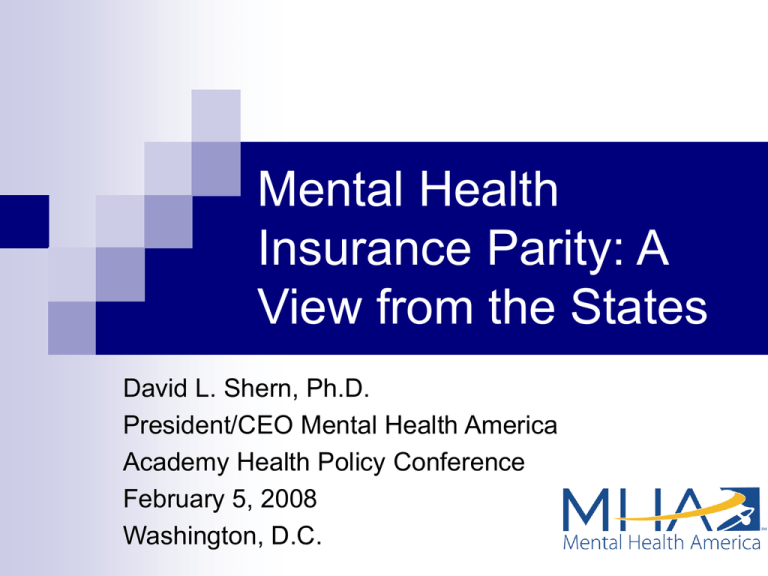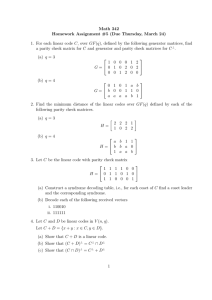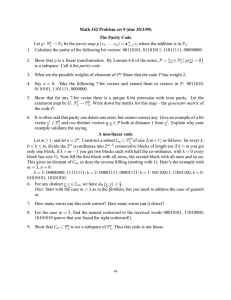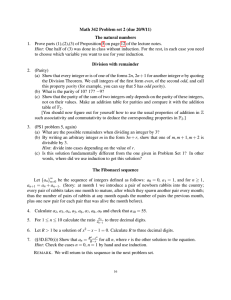Mental Health Insurance Parity: A View from the States
advertisement

Mental Health Insurance Parity: A View from the States David L. Shern, Ph.D. President/CEO Mental Health America Academy Health Policy Conference February 5, 2008 Washington, D.C. Overview of the Presentation Importance of Insurance Coverage for Mental Health and Substance Use Conditions Enactment of State Parity Laws Relative to the 1996 Federal Act Characteristics of State Laws Relationships to Utilization Outcomes U.S. Has Highest Rates of Mental Illness U.S. has the highest prevalence rates (26%) in the world in a comparison of 14 developing and developed countries. (JAMA, 2004) Mental Illness in Teens Mental Illness in Children and Adolescents Very Common Disorders – 13.0% (Median age of onset 11) Mood Disorders – 6.2% (Median age of onset 30) Disruptive Disorder – 10.3% (Median age of onset 11) Substance Use – 2.0% (Median age of onset 20) Any Disorder – 20.9% (Median age of onset 14) Anxiety Substantial Delays in Receiving Treatment Disorders – 6 to 8 year latency Anxiety Disorder – 9 – 23 year latency Mood (PHS, 1999; Kessler et al, 2005, Wang et al 2005) The Impact of Behavioral Disorders Illustrated: Suicide is the Leading Cause of Violent Deaths Worldwide (World Health Organization, 2002) Homicide War Suicide 5 In the United States A Person takes His/Her Life Approximately Every 16 Minutes 6 The Impact of Behavioral Disorders Illustrated: The Disability Impact of Mental Illness Illness Related Disability--United States, Canada, and Western Europe, 2000 (World Health Organization, 2001) Mental Illnesses Alcohol/Drug Use Disorders Alzheimer’s Disease /Dementias Musculoskeletal Diseases Respiratory Diseases Cardiovascular Diseases Sense Organ Diseases Injuries (Disabling) Digestive Diseases Communicable Diseases Cancer (Malignant neoplasms) Diabetes Migraine All Other Causes of Disability 0% 4% 8% 12% 16% 20% 24% 7 Prevalence of Depression in Medical Illness Percent With Depression Medical Condition Chronic Pain 52% MI 40% Stroke 40% Asthma Diabetes 45% 27% Pincus HA. J Clin Psychiatry. 2001;62 Suppl 6:5-9; Schatzberg AF. J Clin Psychiatry. 2004;65 Suppl 12;3-4. Impact of Depression: Impact of Depression on Medical Cost Comorbitities Annual Medical Costs per Patient Without Depression ($) Annual Medical Costs per Patient With Depression ($) Heart failure 2.56 6.74 Allergic rhinitis 3.27 8.46 Asthma 3.73 10.56 Migraine 3.82 15.47 Back pain 11.61 33.25 Diabetes 13.06 27.28 Hypertension 13.38 27.16 Heart Disease 62.40 110.94 Condition Actual annual medical costs per patient based on claims data for 229,776 patients, 1995-1998. SOURCE: OCI 2001 State Parity Laws 38 States/DC Have Enacted Some Form of Parity Law 5 Full or Best Parity 7 Good Parity 26 Limited Parity Laws 13 Mandate Coverage of MH Services 2 No Mandates or Parity State Parity Laws by Year 10 8 6 State Laws 4 2 Year 7 5 3 1 99 97 95 93 0 91 Number of State Laws 12 Variations in Parity Laws Best Parity Laws (5) Applies to All Mental Health and Substance Use Condition No exemptions for Small Employers or Cost Increases Same Benefits as General Health Conditions Co-pays Limits Good Parity Laws (7) Often Exclude Substance Use Include Some Exemptions Conditions Variations in Parity Laws (cont) Limited Parity Laws (26 States) Apply to Select Groups Often Persons with Serious Mental Health Diagnoses (Schizophrenia, Bi-Polar Illness, etc.) Includes Exemptions Often Excludes Substance Use Conditions No Parity but Mandates MH Services (13) No Parity or Mandates (2) Variable Estimates of Effect on Service Utilization in States Earlier Analyses by Sturm and Colleagues (2000, 2004, 2004)Showed Limited to No Effect on Utilization Importance of Covering the Effects of Managed Care ERISA Population More Recent Analyses by Harris et al. (2006) Increase Utilization of Mental Health Services Particularly for Individuals with Mild to Moderate Disorders Perhaps Indicative of Greater Penetration of Parity Laws in more Recent Years Mental Health America Ranking Study – Depression and Suicide Integrated Data from Several National Data Sets to Examine Relationships between System Characteristics, Depression and Suicide Rates NSDUH, BRFSS, CDC Suicide Rates MHA Parity Ratings for States MHA State Ranking Study (cont.) Found Significant Difference between States Parity Rating and Mental Health Service Rates. Best or Good Limited or No Parity Law = 15.8% Parity Law = 13.4% Significant Negative Correlation between Mental Health Service Rate and Suicide Rate Significant Positive Correlation between Rates of Depression and Service Use Several Other Indicators or System Capacity Related to Decreased Rates of Suicide and Depression Conclusions MHSU Conditions Prevalent, Disabling and Expensive State Parity Laws appear to have Increased Rates of Mental Health Service Use Utilization of Services may be Linked to Positive Health and Behavioral Health Status in the Population.





